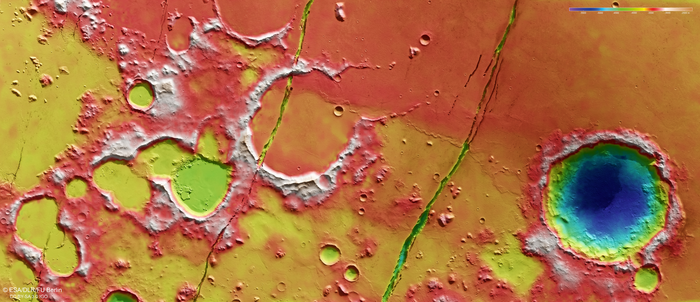Deep rumbles have been found inside Mars, elevating the likelihood that there is volcanic activity happening beneath the Red Planet's surface.
As reported first by ScienceAlert, scientists have determined that molten magma is likely still present beneath Mars' crust, indicating that volcanism is actively shaping the planet's surface.
This conclusion was reached after analyzing a cluster of marsquakes found by NASA's InSight lander.

Volcanic Activity in Mars
This latest study adds to a growing body of evidence suggesting that volcanic activity on Mars continued long after it was believed to have stopped. This might have effects on how scientists interpret the geology of the planet and their search for potential signs of life on Mars.
Scientists believed that not much was happening inside the red planet until recently. The planet lacks any discernible global magnetic field and since this field is created by internal activity, its absence implied a lack of it as well.
However, science sprouted its wonders when NASA deployed the InSight lander, which was outfitted with sensitive seismic detectors. As a result, scientists learned that Mars is trembling due to seismic activity, even with startlingly strong intensity in some instances.
Over 1,300 earthquakes have been found by InSight so far, as noted by ScienceAlert.
These quakes can disclose a lot about the structure and activity of Mars' interior, and a group of geophysicists under the direction of Simon Stähler of ETH Zurich in Switzerland have closely examined a cluster of 20 recent quakes to learn more about what's happening inside the planet's core.
The scientists discovered that the majority of the faults dispersed throughout the whole surface of Mars appear to be seismically inactive.
But more interestingly, the cluster appears to have started in the Cerberus Fossae region. It is made up of structures known as graben, where tectonic activity has opened up faults, causing crustal blocks to slide down between the ridges of the faults.
Cerberus Fossae Region
The scientists discovered that the low frequency of the deeper seismic waves may point to a heated source location between 30 and 50 kilometers (18 to 31 miles) below the surface, which is consistent with molten magma and, consequently, active volcanic activity.
Additionally, the Cerberus Fossae graben's flanks appear to be the site of frequent marsquakes.
As a result of comparing their findings with observational pictures of the Cerberus Fossae, they discovered deposits of darker dust dispersed throughout the area from a fissure known as the Cerberus Fossae Mantling Unit. This was recognized as proof of recent volcanic activity on Mars last year.
"The darker shade of the dust signifies geological evidence of more recent volcanic activity - perhaps within the past 50,000 years - relatively young, in geological terms," Stähler said in a press release statement.
"It is possible that what we are seeing are the last remnants of this once active volcanic region or that the magma is right now moving eastward to the next location of eruption."
This article is owned by Tech Times
Written by Joaquin Victor Tacla
ⓒ 2026 TECHTIMES.com All rights reserved. Do not reproduce without permission.




